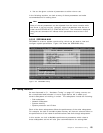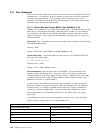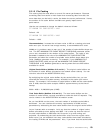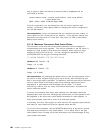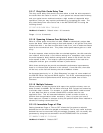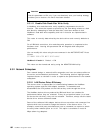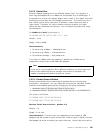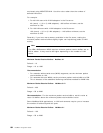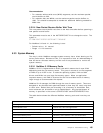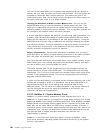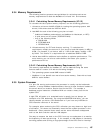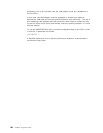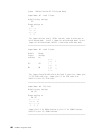
5.3.2.2 Packet Size
Different network topologies will use different packet sizes. For example, a
token-ring LAN adapter set to 16 Mbps can use packets of up to 4202 bytes. If
the packet size is left at the network default value, which is 1514 bytes, this could
unnecessarily slow down the LAN adapter performance. The reason for this is
that it takes just as many instructions to process a small frame as it does a
larger frame. Therefore, for a given amount of data to transfer, the larger
frames will be transferred more quickly. You can adjust the packet size using
set commands.
For NetWare 3.12 and 4.1, the syntax is:
SET MAXIMUM PHYSICAL RECEIVE PACKET SIZE = VALUE
Default = 1514
Range = 618 to 24682
Recommendation:
1. For token-ring 16 Mbps = 4202 packet size
2. For token-ring 4 Mbps = 2154 packet size
3. For Ethernet 10 Mbps = 1514 packet size
In the case of 4 Mbps token-ring adapters, a packet size of 4202 can be
supported on some of the newer IBM LAN adapters.
Note
If you are in a multi-segment LAN or WAN environment, you must make sure
that all inter-networking devices (bridges and routers for example) are
capable of passing the packet size that you choose.
5.3.2.3 Packet Receive Buffers
Packet receive buffers hold communication packets that are waiting to be
processed or transmitted. You can adjust the minimum and maximum number
of buffers that NetWare generates by changing the following parameters:
1. MINIMUM PACKET RECEIVE BUFFERS (STARTUP.NCF)
2. MAXIMUM PACKET RECEIVE BUFFERS (STARTUP.NCF or AUTOEXEC.NCF)
The syntax is as follows:
SET MINIMUM PACKET RECEIVE BUFFERS=VALUE
SET MAXIMUM PACKET RECEIVE BUFFERS=VALUE
Minimum Packet Receive Buffers:
NetWare 3.12
Default = 10
Range = 10 to 100
Recommendation:
This value can vary depending on the number of LAN
adapters and the number of users on the LAN. Allow at least 10 buffers for each
LAN adapter card and one buffer per active LAN user. Active LAN users can be
Chapter 5. Performance Tuning 183



